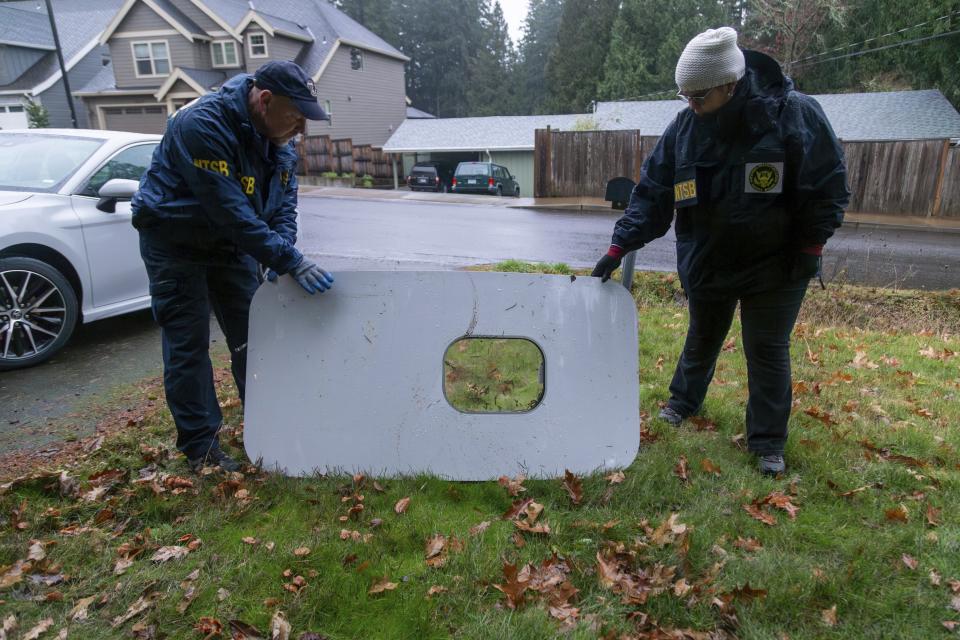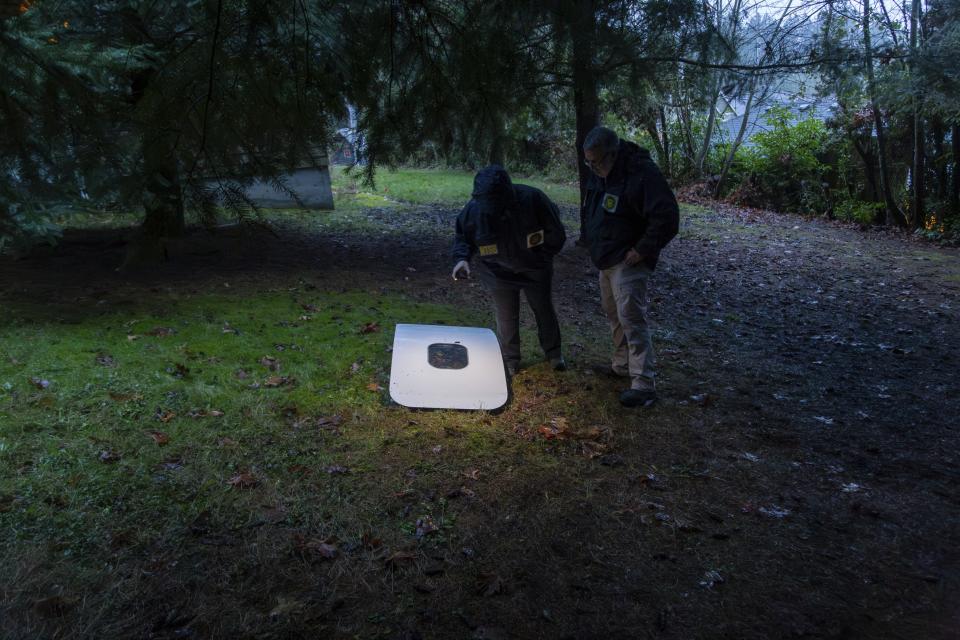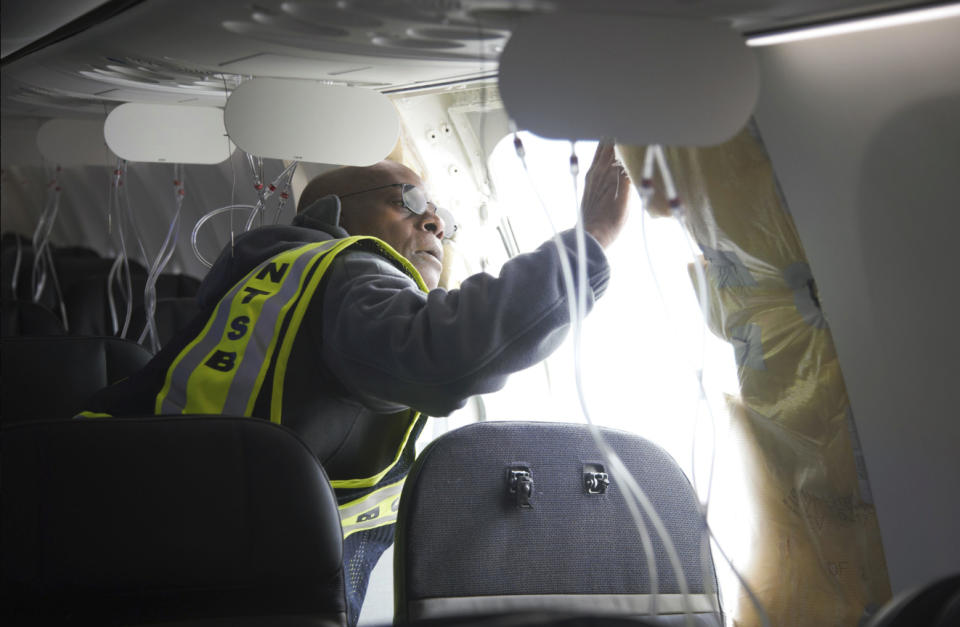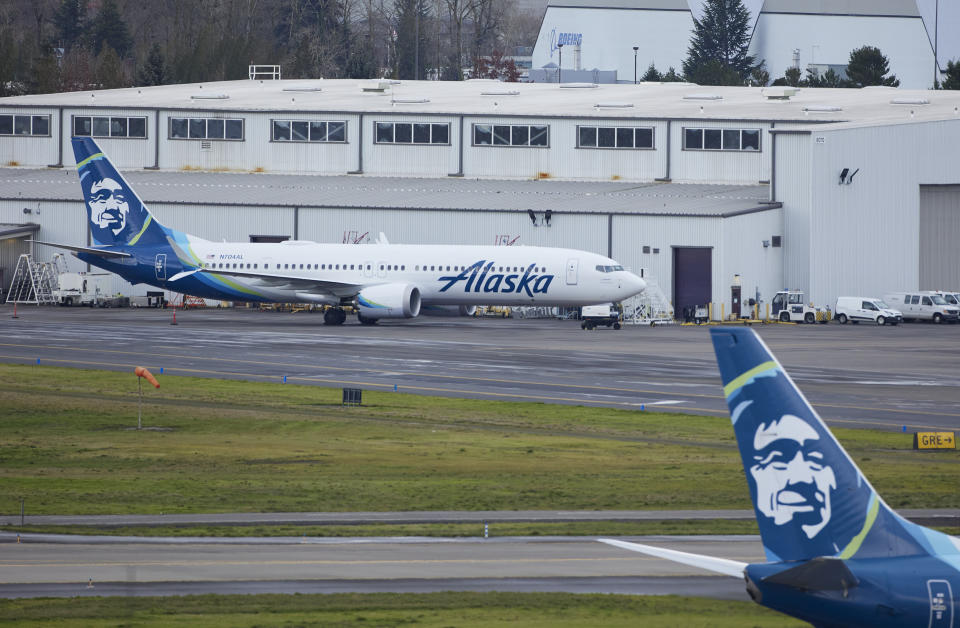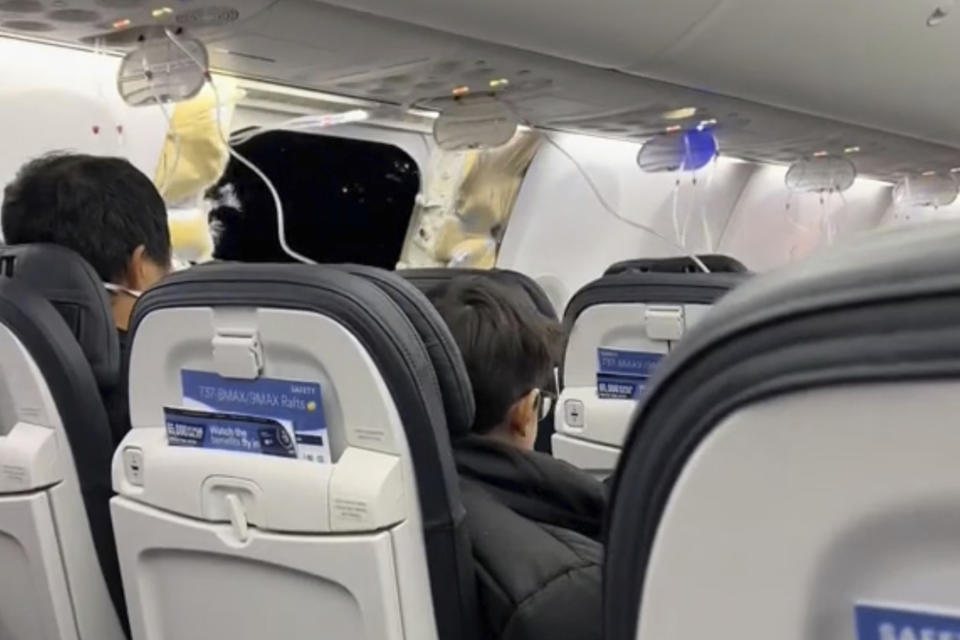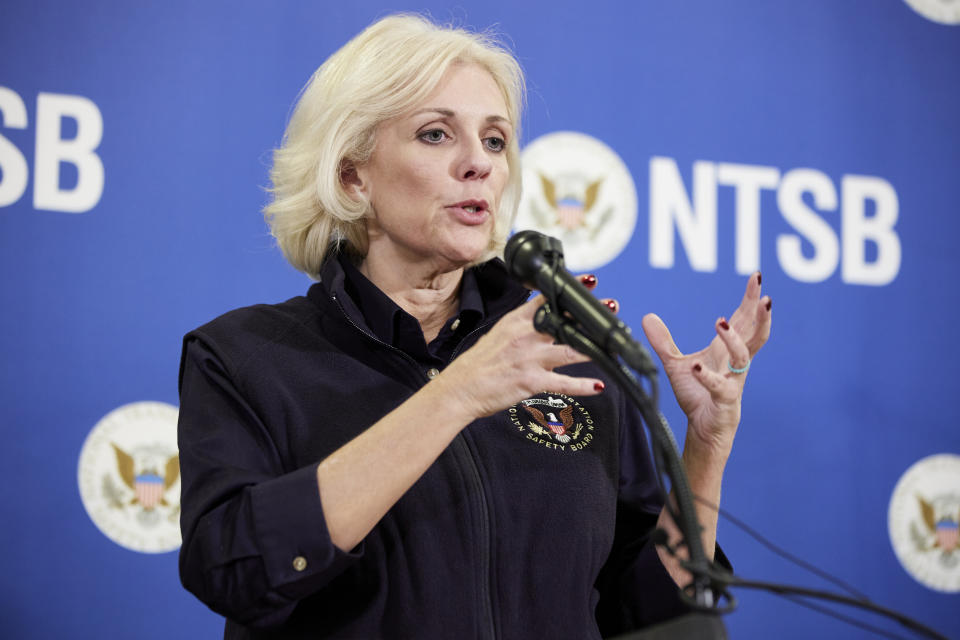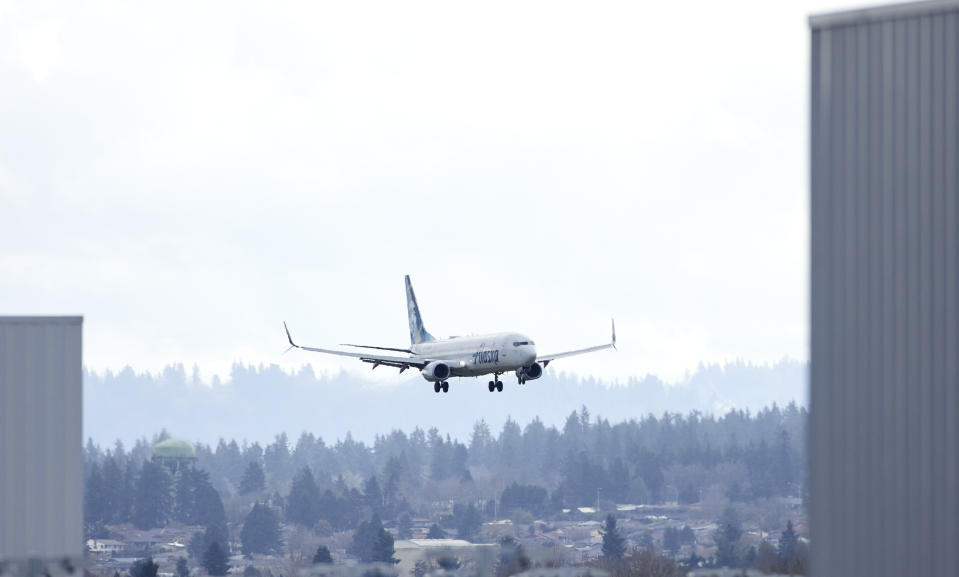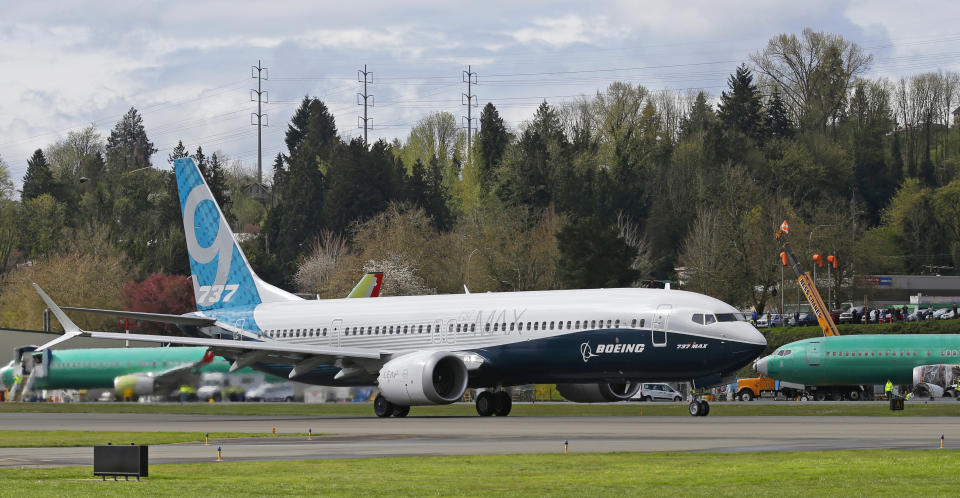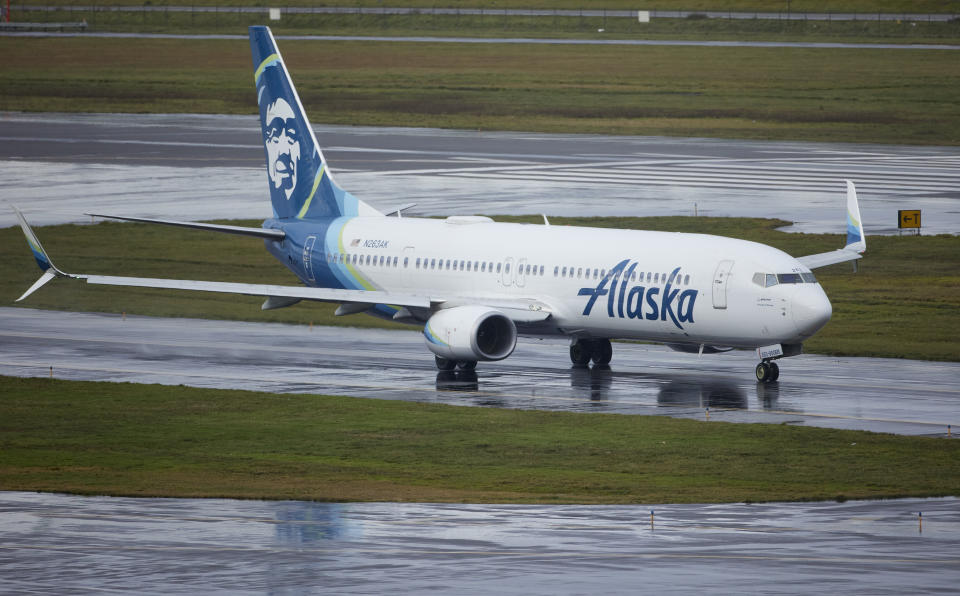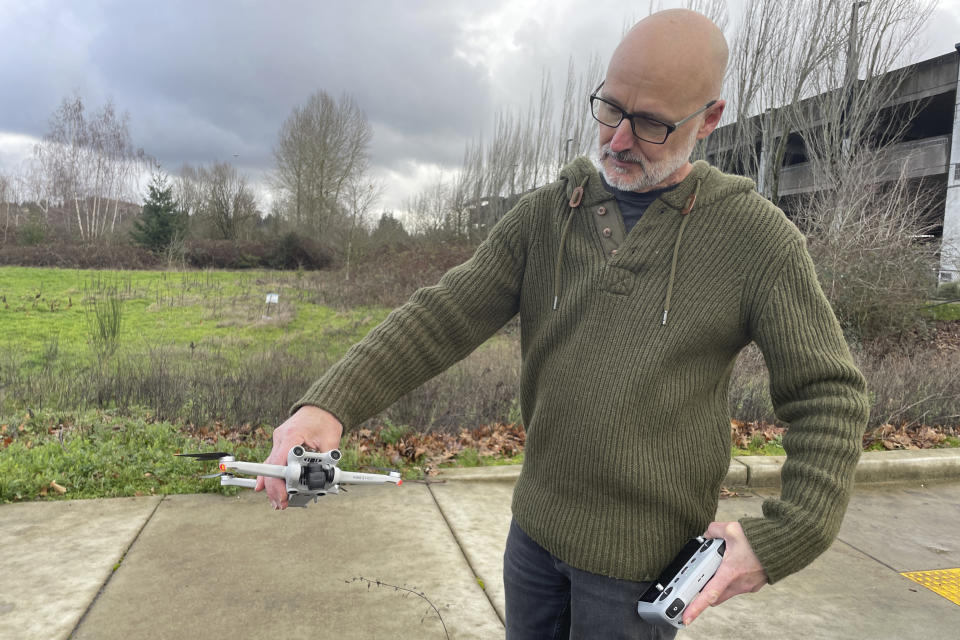Alaska Airlines' decision not to ground Boeing jet despite warning signs comes under scrutiny
PORTLAND, Ore. (AP) — The decision by Alaska Airlines to stop flying one of its planes over the Pacific Ocean to Hawaii due to warnings from a cabin-pressurization system — yet keep flying it over land — is raising questions about whether the jet should have been in the air at all.
The nation’s top accident investigator says warning lights were triggered on three flights, including each of the two days before the brand-new Boeing 737 Max 9 suffered a terrifying fuselage blowout Friday night. A plug covering a spot left for an emergency door tore off the plane as it flew 16,000 feet (4,800 meters) above Oregon.
Jennifer Homendy, chair of the National Transportation Safety Board, said maintenance crews checked the plane and cleared it to fly — but the airline decided not to use it for the long route to Hawaii over water so that it “could return very quickly to an airport” if the warning light reappeared.
Friday’s flight was headed from Oregon to Southern California, and made it back to Portland without serious injury to any of the 171 passengers and six crew members. But the decision to allow it to fly over land in the first place struck some aviation experts as illogical.
“If you are afraid to take the airplane far from land, what is the reason for that? That has to be answered by Alaska Airlines,” said Steven Wallace, an air-safety consultant and commercial pilot who once headed accident investigations for the Federal Aviation Administration.
The FAA grounded all Max 9s operated by Alaska and United and some flown by foreign airlines for inspection after the Friday night flight. The inspections are focused on plugs used to seal an area set aside for extra emergency doors that are not required on United and Alaska Max 9s.
Monday afternoon, United Airlines said it found loose bolts and other “installation issues” on door plugs that were inspected after the Alaska Airlines incident.
“Since we began preliminary inspections on Saturday, we have found instances that appear to relate to installation issues in the door plug — for example, bolts that needed additional tightening,” Chicago-based United said.
Boeing, which has had its own share of problems with various planes over the years, pledged to “help address any and all findings” that airlines make during their inspections.
The FAA declined to comment on whether the Alaska Airlines plane in question should have been allowed to keep flying. The agency said “it would be premature” to comment while the NTSB is investigating the Friday night flight.
Seattle-based Alaska Airlines also declined to comment, saying it would need permission from the NTSB to discuss the plane and its maintenance history. “We will provide information as soon as the NTSB permits us to do so,” the airline said.
Alan Diehl, a former crash investigator for both the NTSB and the Federal Aviation Administration, said Alaska should have grounded the plane, period. However, he and other critics said the decision to stop flying the plane to Hawaii might have averted a disaster.
If the blowout had happened halfway to Hawaii, pilots would have been forced to fly low enough so passengers could breathe without oxygen masks, which burns more fuel. And the gaping hole in the fuselage would create drag. The plane might have run out of fuel before reaching land, experts said.
“As far as I’m concerned, there’s an angel in Alaska,” Diehl said. “Whoever made the decision to do that probably saved a lot of lives.”
Other aviation insiders saw nothing unusual in the airline’s decision to limit but not ground the plane after the pressurization warnings on flights Dec. 7, Jan 3 and Jan. 4 — the day before the blowout.
“Whatever maintenance they performed on it, (they decided) ’Let’s be conservative and not put this thing out over water,” said John Cox, a former airline pilot and now a safety consultant. He said the intermittent nature of the pressurization warnings – three out of the plane’s 145 flights – might have made them suspect a bad sensor or something else.
It’s not clear whether the airline would have been required to report the warning lights to the FAA or the fact that it had limited the plane to flying over land. Wallace said rules about such reporting aren’t specific.
Homendy, the NTSB chair, cautioned that the pressurization warning light might be unrelated to Friday’s incident, which occurred as the plane cruised about 3 miles (4.8 kilometers) over Oregon.
On Monday, the FAA approved guidelines for inspecting the door plugs on other Max 9 jets and repairing them, if necessary. That move could speed the return to service of the 171 planes that the FAA grounded.
Alaska has 64 other Max 9s, and United Airlines owns 79 of them. No other U.S. airlines operate that model.
The NTSB said the lost door plug was found Sunday near Portland in the back yard of a home.
At a news conference Sunday night, Homendy said an explosive rush of air damaged several rows of seats and pulled insulation from the walls. The cockpit door flew open and banged into a lavatory door.
Two cellphones that appeared to have belonged to passengers on Friday’s flight were found on the ground. One was discovered in a yard, the other on the side of a road. Both were turned over to the NTSB.
Grounding 171 of 218 Max 9s in operation, including all those used by Alaska and United, led to flight cancellations at both carriers.
Boeing CEO Dave Calhoun called a companywide webcast to talk about the incident with employees and senior leadership for Tuesday.
Alaska Airlines flight 1282 took off from Portland at 5:07 p.m. Friday for a two-hour trip to Ontario, California. About six minutes later, the chunk of fuselage blew out.
Videos posted online by passengers showed a gaping hole where the paneled-over door had been. They applauded when the plane landed safely about 13 minutes after the blowout. Firefighters came down the aisle, asking passengers to remain in their seats as they treated the injured.
It was extremely lucky that the airplane had not yet reached cruising altitude, when passengers and flight attendants might be walking around the cabin, Homendy said.
The Max is the newest version of Boeing’s venerable 737, a twin-engine, single-aisle plane frequently used on U.S. domestic flights. The model went into service in May 2017.
Two Max 8 jets crashed in 2018 and 2019, killing 346 people. All Max 8 and Max 9 planes were grounded worldwide for nearly two years until Boeing made changes to an automated flight control system implicated in the crashes.
The Max has been plagued by other issues, including manufacturing flaws.
___
Koenig reported from Dallas and Krisher reported from Detroit. Associated Press reporter Terry Spencer in Fort Lauderdale, Florida, contributed to this report.
